You can translate this blog using Google translator widget. And you can always comment in your language, of course!
Yellow texts are in English

montgomery clift
1.3.11
Foto del mes
En esta foto Monty y Liz derrochan estilo. Me parece una d las fotos más cool de Monty.
5.8.10
Raintree County.- sesión de fotos
16.6.10
Raintree County.- sesión de peluquería y maquillaje (fotos del rodaje)






Una vez más, se muestra la enorme complicidad entre Monty y Liz.
5.6.10
Sesión de fotos (30).- Raintree County
17.5.10
Raintree County.- desayuno con Liz
Esta secuencia de fotos son previas al accidente como se aprecia en el rostro y muestran la gran complicidad entre Monty y Liz: Bromeando y acogiéndolo ella en su regazo. Él lleva la camiseta de rayas que luce su personaje en la carrera al principio de la película.
12.5.10
Montgomery Clift sufre el accidente de coche (12 de mayo de 1956)

Después de un largo tiempo sin rodar, desechando continuamente los guiones por su perfeccionismo neurótico, que le llegaban (siempre a él primero), se animó a acompañar nuevamente a Liz en un proyecto colosal que la Metro había preparado como el nuevo "Lo que el viento se llevó".
Desde el primer momento veía el guión de Raintree County (El árbol de la vida, 1957) como un folletín soso y no creía tener credibilidad para interpretar a los 36 a un ingenuo muchacho del Sur de 17 años en los albores de la Guerra de Secesión. Se encontraba agotado porque rodaba prácticamente todas las escenas del filme y el acuciante dolor físco y emcocional que sentía no lograba aplacarlo con alcohol y pastillas.
Aquella tarde el teléfono sonó insistentemente en Dawn Ridge Road, la casa alquilada por el estudio donde descansaba Monty. Había despedido a su chófer (llevaba años sin conducir y había tenido un par de pequeños accidentes) y se encontraba muy cansado. Liz insistía de que fuera porque había un sacerdote amigo de la familia que quería conocerlo tras el papel del Padre Logan de I Confess (Yo Confieso, 1953). Pero lo que temía Monty era ser nuevamente el confidente de Liz y Michael Wilding, matrimonio que ya hacía aguas. Finalmente accedió a reunirse.
Kevin McCarthy, uno de los mejores amigos de Monty recuerda el ambiente tenso y decadente de la velada. El sacerdote finalmente no se presentó, se encontraba Rock Hudson con su secretaria Phyllis Gate (con la que más adelante se casaría para ocultar su homosexualidad) y Michael Wilding con problemas de espalda estaba tendido en un sofá malhumorado. Los únicos que hablaron fueron Liz y Monty, a quien él llamaba cariñosamente Bessie Mae.

"De pronto miré por mi retrovisor y vi que Monty estaba demasiado próximo. Se me ocurrió que iba a gastarme una de sus habituales bromas, dando un golpecito a mi coche. De modo que pisé el acelerador. El coche de Monty parecía casi encima del mío. Me pegunté si sufriría un ligero desvanecimiento y me asusté. Pero estábamos en plena curva y era peligrosa. Nos desviamos, rechinando los neumáticos en a oscuridad. Detrás de mí vi las luces de los faros de Monty oscilando de uno a otro lado de la carretera y luego oí un estrépito terrible.

- Doctor Kennaer, le presento a Elizabeth Taylor.
"Fue un milagro que viviese. Sangraba desde profundos desgarrones en la mejilla izquierda. Tenía la nariz rota, la mandíbula y aplastao el seno nasal. También sufría conmoción cerebral. No se le hizo cirugía plástica cuando ingresó en quirófano. Se le reconstruyó principalmente la mandíbula". (Más adelante postearé la carta que Monty escribió a su hermano Brooks durante su estancia en el Cedars'Sinai).

15.4.10
La reacción de Monty al ver Raintree County
 En la primavera de 1957 (Patricia Bosworth no especifica cuándo), Montgomery Clift vio un pase privado de Raintree County (El árbol de la vida, 1957).
En la primavera de 1957 (Patricia Bosworth no especifica cuándo), Montgomery Clift vio un pase privado de Raintree County (El árbol de la vida, 1957).De su propia actuación, dijo:
"Exceptuando un par de momentos, estoy horroroso... torpe, frío, siempre caminando. Con la barba parezco Jesucristo con gorro de la Unión."
 Y pronosticó que el público acudiría a ver la película para comprobar "cómo estoy antes y después del accidente".
Y pronosticó que el público acudiría a ver la película para comprobar "cómo estoy antes y después del accidente". 31.3.10
Raintree County.- vestuario de Montgomery Clift
 Subastan en Internet este chaleco que llevó Monty para su papel de John Wickliff en la película Raintree County (El árbol de la vida, 1957). Es un chaleco de lino color hueso bastante gastado y que presenta incluso manchas (no ha sido nunca lavada la prenda, parece ser). Se compró en la subasta que hizo la MGM en 1970 y hasta ahora no se había vuelto a vender. En la etiqueta se ve que perteneció a la productora y apuntado con tinta el nombre del actor. En la biografía de Patricia Bosworth se dice que su hermano Brooks coleccionó todo su vestuario. Quizá esta prenda la vendió directamente la Metro o realmente la pone ahora a la venta, como con tantos objetos que circula en la red, uno de sus descendienes.
Subastan en Internet este chaleco que llevó Monty para su papel de John Wickliff en la película Raintree County (El árbol de la vida, 1957). Es un chaleco de lino color hueso bastante gastado y que presenta incluso manchas (no ha sido nunca lavada la prenda, parece ser). Se compró en la subasta que hizo la MGM en 1970 y hasta ahora no se había vuelto a vender. En la etiqueta se ve que perteneció a la productora y apuntado con tinta el nombre del actor. En la biografía de Patricia Bosworth se dice que su hermano Brooks coleccionó todo su vestuario. Quizá esta prenda la vendió directamente la Metro o realmente la pone ahora a la venta, como con tantos objetos que circula en la red, uno de sus descendienes.Esta es la información que acompaña a la venta:
(English text)
Bone colored linen/flax vest purchased at the MGM auction of 1970 and never worn since. Label shows it was made for and worn by Montgomery Clift. A true film historian/Clift buff could identify the film the costume came from. It is in very worn condition with the following notes: The facing of one button is missing; there is a stain under one chest pocket; there are sweat stains throughout (on the back and under the arm pits most notably) presumably from the original wearer as the hand tailoring on the inside back denotes the specificity of the cut and the sizing for Mr. Clift. The garment has never been cleaned or laundered while in my possession which has been forty years (since the auction itself). This is obviously a one-of-a-kind item for serious cinephiles and or Clift fans and is priced accordingly.
7.12.09
Raintree County.- comentario de Judith M. Kass
El árbol de la vida es una novela que se lee como una película. Está llena de flashbascks, de hechos históricos y de personajes llenos de color cuyos diálogos dan vida al guión. La película está construida como una novela: con un principio, una parte central y un final, en este mismo orden. Empieza en 1859, con la graduación de John Wickliff Shawnessy y de Nell Gaither en la escuela secundaria de Fairhaven, Indiana. Su maestro, Jerusalem Webster Stiles, les habla acerca de un árbol dorado que representa la verdad y la felicidad, y que está escondido en alguna parte del condado. A partir de entonces, Johnny se popone salir en su búsqueda inmediatamente. A pesar de que Nell y Johnny son novios, él se casa con una belleza del sur, Susanna Drake, cuando ésta le informa que está esperando un hijo suyo. Susanna le ha mentido para conseguir que Johnny se case con ella, pero después de un viaje al sur en el que Johnny se da cuenta de que la chica tiene problemas mentales (teme obsesivamente al cruce de razas y un cierto misterio envuelve la muerte de sus padres en un incendio), se queda realmente embarazada.
Estalla la guerra civil, pero Johnny se queda en casa, da clases en la escuela y cuida de su hijo Jimmy y de su cada vez más enloquecida esposa. Susanna se escapa con Jimmy y Johnny se enrola en el ejército de la Unión para intentar encontrarles. Más tarde encontrará a su hijo al cuidado de los antiguos esclavos de Susanna y se lo lleva detrás de las líneas de la Unión. Después de la guerra, Johnny encuentra a Susanna en un asilo para enfermos mentales y regresa con ella a Indiana. Aparentemente recuperada, pero convencida de que su comportamiento ha impedido
a Johnny seguir buscando el mítico árbol, Susanna se escapa una noche seguida por Jimmy, en busca del árbol. Al día siguiente, encuentran a Susanna muerta en los pantanos. Johnny y Nell, reunidos al fin, encuentran a Jimmy cerca del pie de un árbol dorado.
Raintree County fue un intento de la Metro de recuperar en otra película todos los elementos
4.10.09
Después de rodar Raintree County.- secuelas del accidente
Puede decirse que entonces afloraban las secuelas psíquicas de su terrible accidente. Apenas había tenido tiempo recuperándose físicamente del mismo y ahora que no estaba en el bullicioso rodaje se encontraba a sí mismo en su soledad. Tenía que acostumbrarse a su nueva cara, algo muy duro. Hizo instalar pesados cortinajes de color negro en todas las ventanas y en las puertas de vidrio que daban al jardín. La casa estaba en permanente penumbra y pasaba gran parte del día tendido en su dormitorio que olía como a hospital.
En cuanto a las secuelas físicas, seguía asistiendo al dentista para que le recompusiera la mandíbula y a un fisioterapeuta. Sufría dolorosos latigazos en la espalda como una acción retardada del accidente. El actor Jack Larson fue la persona que más le vió entonces. Le acompañaba a las visitas y médicas y también "cuando necesitaba compañía" (el entrecomillado viene así en la biografía de Patricia Bosworth, no sé si tiene un doble significado). Se encontraba muy deprimido y nada parecía alegrarlo.
Hubo amigos como Libby Holman, Bill Gunn o Elizabeth Taylor que le llamaron con regularidad. Ésta última le contaba animadamente el estreno de La vuelta al mundo en 80 días que había producido su marido Mike Todd. Monty no quería hablar con su madre y abreviaba las llamadas que le hacía Sunny. Temía que le viera.
"Dirá algo que sonará perfectamente inofensivo pero con el fin de dejarme anonadado
2.10.09
Revista japonesa.- Raintree County
13.9.09
Raintree County.- Doctor Macro's High Quality Movie Scans
| |
| RAINTREE COUNTY |
| |
| MGM, 1957. Directed by Edward Dmytryk. Camera: Robert Surtees. With Montgomery Clift, Elizabeth Taylor, Eva Marie Saint, Nigel Patrick, Lee Marvin, Rod Taylor, Agnes Moorehead, Walter Abel, Jarma Lewis, Tom Drake, Rhys Williams, Russell Collins, DeForest Kelley, Myrna Hansen, Oliver Blake, John Eldredge, Isabelle Cooley, Ruth Attaway. |
In the town of Freehaven in Raintree County, Indiana, the high school class of 1859 poses for a photograph. Everyone expects great things of valedictorian John Wickliff Shawnessy—in particular his sweetheart, Nell Gaither, who admires Johnny for his idealism, poetry and respect for truth and justice. Before graduation, Prof. Jerusalem Webster Stiles, who smilingly describes himself as "pitiful and harmless," relates to his students a local legend. Raintree County is named for a golden raintree, which was planted somewhere in the region by Johnny Appleseed. Find it, declares the professor in an unusually pensive mood, and you will learn the secret of life itself. Johnny immediately sets out to locate the tree, but as he wanders through a swamp, he nearly drowns. Back in town, Orville "Flash" Perkins boasts that, in addition to being "half horse, half alligator," he is the area's top runner. Johnny challenges him to a race, and on the Fourth of July, the two competitors meet in the street. Before the race, the men engage in a drinking contest, and although Johnny, who has never before drunk whiskey, is rendered nearly senseless, he nonetheless wins the race. Later that day, Johnny goes to the river for a picnic with the professor, an attractive married woman named Lydia Gray, and a beautiful visitor from the South named Susanna Drake. Johnny and Susanna go swimming, and then, in a moment of passion, make love. The next day, Susanna returns to New Orleans, and Johnny returns to Nell. When Stiles tries to run away with Lydia, her outraged husband Ezra tries to shoot him, but after Stiles swears that he never touched Lydia, Johnny helps the professor to leave town. The same train that carries Stiles to safety, however, brings Susanna back to Freehaven with a desperate message for Johnny: she is pregnant. Johnny announces their marriage, whereupon his father, T.D. Shawnessy, a gentle and educated minister, somewhat sadly wishes the young man happiness. Nell also wishes him well but tearfully confesses that she still loves him. On the boat trip to New Orleans, Susanna is shocked to discover that Johnny is an abolitionist and nervously proclaims that nothing is worse than having a drop of Negro blood in one's veins. The couple visits the ruins of a family plantation that burned when Susanna was a child. Acting strangely, Susanna sorrowfully declares that she dearly loved her former nanny, a black Cuban named Henrietta Courtney, who perished with the girl's parents in the conflagration. Johnny questions Susanna's cousin and learns that after her parents were married, her mother went slowly insane. Her father met Henrietta and brought her home to care for little Susanna. When the bodies were taken from the fire, it appeared that the child's father and Henrietta had been shot, but no one was able to prove this. Johnny brings Susanna back to Raintree County, where he becomes a teacher. Susanna admits that she was never really pregnant, but Johnny assures her of his love nonetheless. When Lincoln wins the presidential election, Susanna announces that to please her husband, she has freed her two slaves and now pays them wages. This prompts several of their guests to laugh, and Susanna, believing she has again displeased her husband, becomes hysterical. Johnny calms her, but later, after giving birth to a son on the very day that Civil War is declared, Susanna informs him that two babies were born, and that "they" threw the dark one away.
Several years later, Nell returns to Freehaven after living for a time in Indianapolis, and it is clear that she still loves Johnny. Susanna's nightmares and wild-eyed outbursts have become more frequent, and one evening, Johnny persuades her to tell him about the fire. Jealous of Susanna's love for Henrietta, the child's mother had flown into a rage, thereby angering the little girl. When Susanna realized that her father also loved Henrietta, she vengefully revealed this in an anonymous note to her mother. That night, she heard a crackling sound in Henrietta's room, and soon afterward, the fire consumed the house. Believing her mother had killed the lovers because of her note, Susanna had always felt responsible for the tragedy. Johnny tries to comfort Susanna, but one day, he arrives home to find that she has taken their son Jim and fled to Georgia. With his wife gone, Johnny joins the Union Army, and as his train departs, Nell confesses that she has never stopped loving him. Johnny joins an Indiana brigade that includes not only Flash, but his old friend Stiles, who is now a war correspondent. The men participate in a number of hellish battles, and in November 1864, find themselves in Atlanta. Wary of rebel snipers, Johnny and Flash approach an old cabin that once belonged to Henrietta. Inside are little Jim and two Drake slaves. One of them explains that although Susanna was not Henrietta's child, she always believed that she was. Consumed by madness, Susanna had been taken to an asylum some time earlier. Johnny carries little Jim toward the Union camp, but as they run through the woods, Flash is shot by rebel soldiers and dies. After the war, Johnny finds Susanna in a wretched asylum and takes her home. He returns to teaching, but his friends believe he should run for Congress. Susanna realizes that it is she who holds him back, and that Nell still deeply loves him. That night, Susanna, telling Jim that she hopes to find the golden raintree for Johnny, says goodbye and runs toward the swamp. Alarmed, Jim follows her, and soon afterward, a search party is organized. In the morning, Stiles, who has returned to Raintree County to marry the widowed Lydia Gray, discovers that Susanna has drowned. In agony, Johnny continues to search for his son. The weeping boy hears his father's voice, and with great relief, Johnny, Nell and Jim head out of the swamp, unaware of the tall tree gleaming golden in the sunlight. Notes
Onscreen credits acknowledge the cooperation of "the Baltimore and Ohio Railroad Company, the Tennessee State Game & Fish Commission at Reelfoot Lake and the people of the Commonwealth of Kentucky." The picture opens with a five-minute musical overture. Following "Johnny's" departure to fight in the Civil War, there is an intermission. Act Two begins as Johnny joins his brigade. The NYT review lists a running time of 168 minutes. Apparently, sixteen minutes of the film were cut after its premiere. The picture was, as the Var reviewer notes, "one of the biggest and costliest (estimated at $5,000,000) productions from Metro since its release of David O. Selznick's Gone With the Wind." It took MGM six years to turn the novel into a screenplay. According to modern sources, shortly after the novel's publication, MGM purchased the film rights from author Ross Lockridge, Jr. for $150,000, but did not produce the film until 1956 because of script problems. Modern sources note that Raintree County was Lockridge's only novel, and that he committed suicide in 1948. January and February 1956 HR news items note that MGM originally considered Alec Guinness and Arthur O'Connell for leading roles. Filming was halted after Montgomery Clift's automobile accident on May 13, 1956 and did not resume until July 23, 1956. In the accident, which occurred after Clift had been to a dinner party at Elizabeth Taylor's house, the actor's face was severely injured. Modern sources note that numerous facial lacerations and broken bones altered the structure of Clift's face so much that filming of his scenes after his return to the production was difficult. Modern sources also note that audiences frequently went to the film to make comparisons of "before" and "after" shots of Clift. Raintree County was the first picture to be filmed using Panavision's "Camera 65" process. Most release prints, however, were issued as 35mm anamorphic prints. Actor Gardner McKay (1932 - 2001), who appeared briefly as a Union soldier, made his feature film debut in Raintree County. Most of the film was shot on location near Danville, Kentucky. Var reported that the swamp scenes were filmed at Reelfoot Lake, Tiptonville, Tennessee, and that mansions were photographed in Natchez and Port Gibson, Mississippi, while a June 11, 1956 HR article adds location shooting along the Ohio River, Ohio. The film received Academy Award nominations for Best Actress (Taylor), Best Art Direction, Best Score and Best Costume Design. Music includes "The Song of Raintree County," music by Johnny Green, lyrics by Paul Francis Webster, sung by Nat "King" Cole. | ||||||||||||||||||||||||||||||||||||||||||||||||
Poster artwork courtesy of Cyrus
Su carrera comprende 17 títulos entre 1948 y 1966. Trabajó con los grandes directores (Hawks, Hitchcock, Stevens, Zinnemann, Kazan, Huston, Wyler) y las grandes estrellas (Lancaster, Marilyn Monroe, Katherine Hepburn, Brando, Wayne, Elizabeth Taylor especialmente) de entonces.
Su carrera comprende 17 títulos entre 1948 y 1966. Trabajó con los grandes directores (Hawks, Hitchcock, Stevens, Zinnemann, Kazan, Huston, Wyler) y las grandes estrellas (Lancaster, Marilyn Monroe, Katherine Hepburn, Brando, Wayne, Elizabeth Taylor especialmente) de entonces.
Say, where did I see this guy?
In red river?
Or a place in the sun?
Maybe the misfits?
Or from here to eternity?
Everybody say, is he all right?
And everybody say, whats he like?
Everybody say, he sure looks funny.
Thats...Montgomery Clift, honey!
New York, New York, New York, 42nd street
Hustlers rustle and pimps pimp the beat
Monty Clift is recognized at dawn
He aint got no shoes and his clothes are torn
I see a car smashed at night
Cut the applause and dim the light
Monty's face is broken on a wheel
Is he alive? can he still feel?
Everybody say, is he all right?
And everybody say, whats he like?
Everybody say, he sure looks funny.
Thats...Montgomery Clift, honey!
Nembutol numbs it all
But I prefer alcohol
He said go out and get me my old movie stills
Go out and get me another roll of pills
There I go again shaking, but I aint got the chills





































.-+albornoz+(4)+BLOG.jpg)

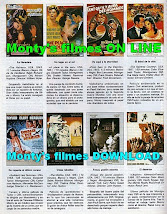














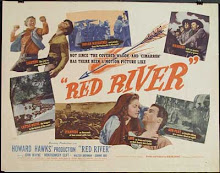
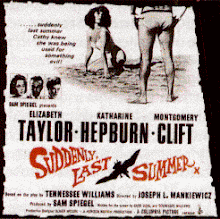




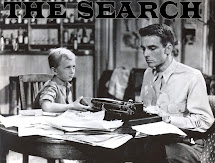

2.jpg)
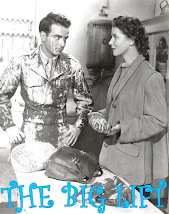.jpg)
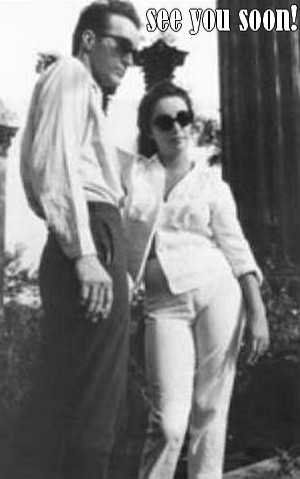

.jpg)

